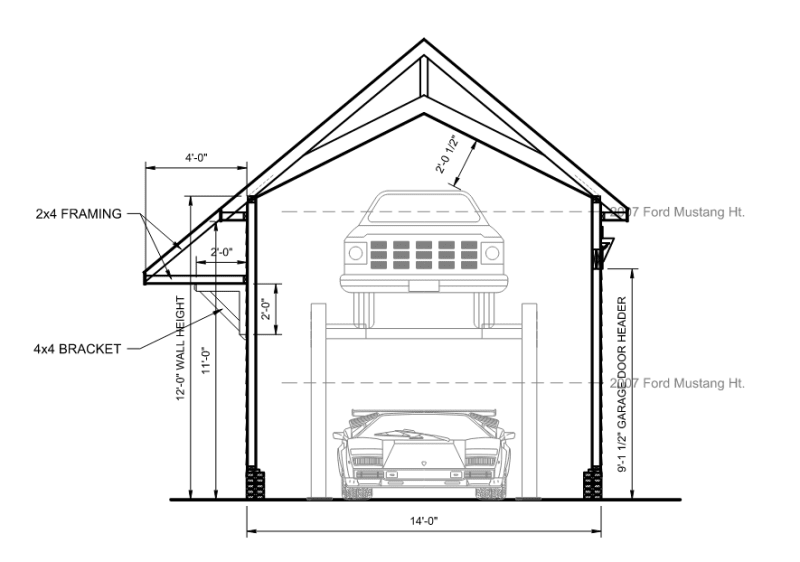TRAK.Structural
Structural
I've seen some threads on scissor trusses before but wanted to get a fresh take on this as it relates to my specific scenario below.
I'm working on a small 1-story garage where the designer has drawn up the building section using scissor trusses to accommodate a car lift. Its a rectangular plan with dimensions of 14 ft x 28 ft.
1. How are engineers estimating the truss thrust that gets applied to the top of the supporting walls? Is this something that is easily obtained from a truss supplier?
2. I'm stumped on how I am going to provide something to resist the above mentioned thrust considering the car lift space requirements, any ideas??
3. At the gable ends, is it common to specify a flat bottom chord or would the wall top plate be built to match the typical scissor bottom chord profile?
4. The gable end trusses need to be able to transfer the diaphragm shear into the walls, on a residential project is it reasonable to believe that if this loading criteria is specified that it will actually be accounted for?

I'm working on a small 1-story garage where the designer has drawn up the building section using scissor trusses to accommodate a car lift. Its a rectangular plan with dimensions of 14 ft x 28 ft.
1. How are engineers estimating the truss thrust that gets applied to the top of the supporting walls? Is this something that is easily obtained from a truss supplier?
2. I'm stumped on how I am going to provide something to resist the above mentioned thrust considering the car lift space requirements, any ideas??
3. At the gable ends, is it common to specify a flat bottom chord or would the wall top plate be built to match the typical scissor bottom chord profile?
4. The gable end trusses need to be able to transfer the diaphragm shear into the walls, on a residential project is it reasonable to believe that if this loading criteria is specified that it will actually be accounted for?


![[hammer] [hammer] [hammer]](/data/assets/smilies/hammer.gif)